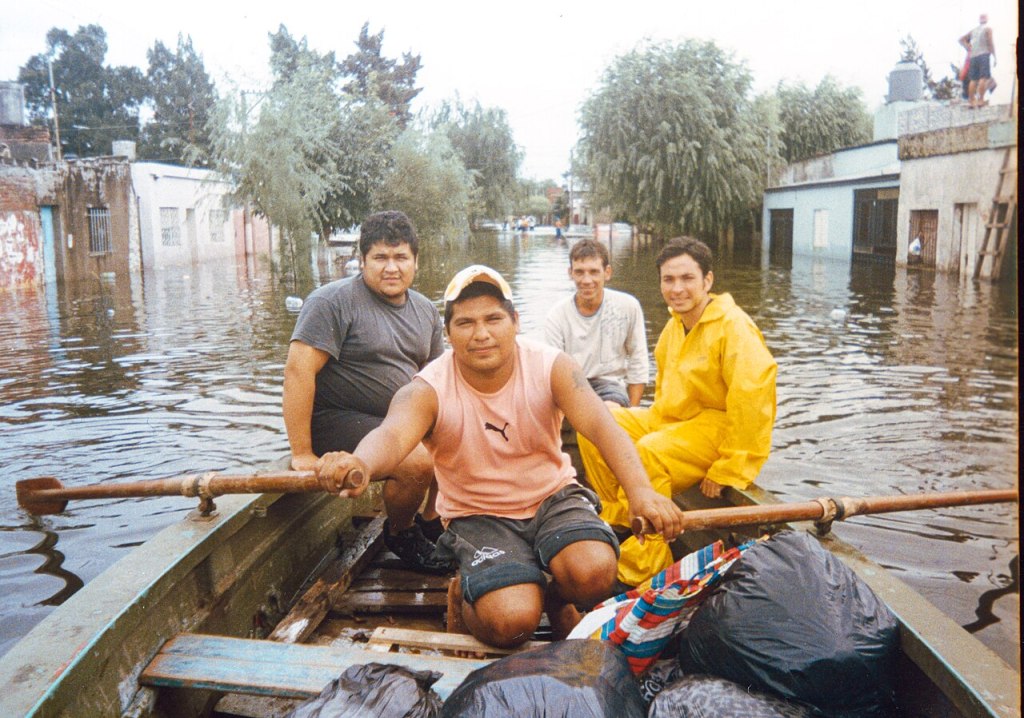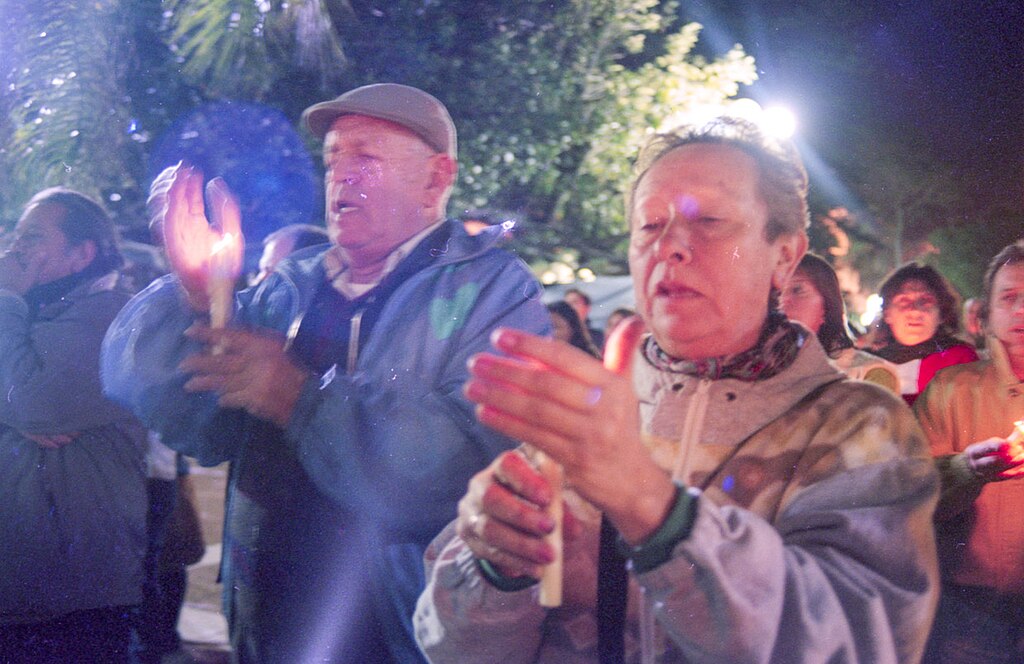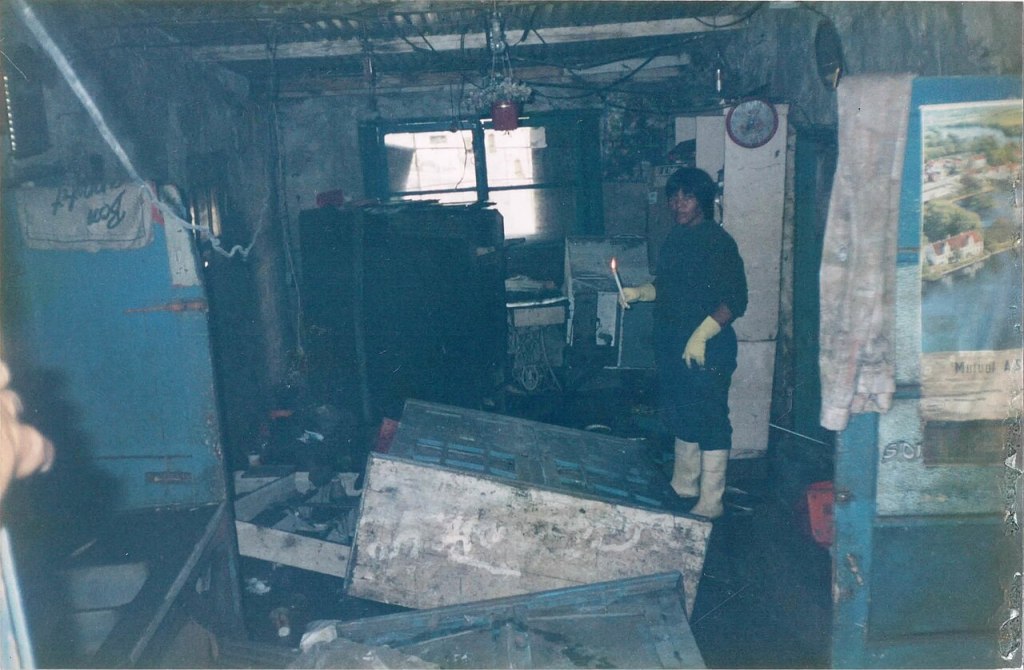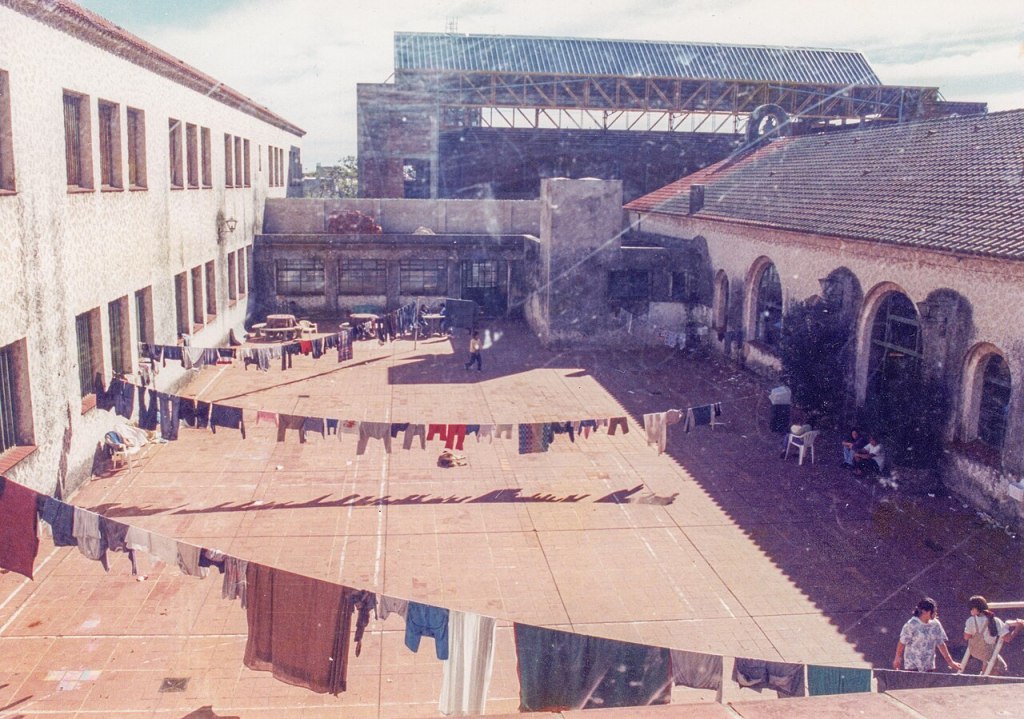Can Wikimedia projects help to repair social memories? Can open repositories about historical catastrophes be collaboratively (re) built? How can this be done with a respectful approach that avoids re-victimisation?
The 2003 flood in the city of Santa Fe (Argentina) is one of the most important avoidable socio-environmental catastrophes in the recent history of the country: a river overflowing an unfinished defence, a third of the city under water, 158 fatalities and hundreds of thousands abandoning their homes. A call for justice that has been going on for two decades.
In those days of April and May 2003, photographic and audiovisual records were generated on the rooftops, in the canoes, in the evacuee centres or in the street kitchens, outside the traditional press coverage. With greater or lesser technique, in an era that was still analogical, the people affected by the floods narrated their emergencies, their losses and their anger. Images that tell of the social crisis, neglect and abandonment, but also of their places of self-containment and forms of self-organisation. Twenty years later, many of these materials were still unpublished.

Photo by Juana Núñez. CC BY-SA 4.0
Wikimedistas del Litoral went out in search of these images, with the aim of preventing these archives from being lost completely, but also to fill a gap in visual content on Wikipedia, the main consulting source for the next generation that did not live the flood but did live its consequences.
Free culture as a strategy for collective memory
Wikimedistas del Litoral is a group of photographic activists from the cities of Santa Fe and Paraná. With their images and under the philosophy of free culture, they propose to narrate and document recent history and local culture.
Through images under free licenses, they create visual and audiovisual narratives on collaborative internet platforms. They consider Wikimedia projects as spaces to inhabit and as tools to disseminate and make struggles visible. Making the digital territory an extension of the street, where common sense can be debated on a collaborative, free and open basis.

Photo by Memoria Urgente | CC BY-SA 4.0
Why in Wikimedia projects? A bit because of what Agustín Zanotti and Paloma Rubin say about Wikipedia: “it can be understood as a ‘fact factory’, since it has become a source of authority“. Even when it is clear that Wikipedia is not a primary source, “a series of processes are at work, including the revaluation of an idea of collective wisdom (…), as well as alliances with corporate actors, which position Wikipedia as a prominent content among the results of the main web search engines“.
In relation to images, Laura Malagón Valbuena and Marcela Suárez Estrada state that “the shift towards the digital (…) has encouraged the decentralisation of written language to make room for visuality as an important communicative tool in the creation of archives of memory and resistance“.
As Giselle Bordoy points out, “digitising and releasing photographs and archives on Wikimedia Commons and on free platforms does not simply mean sharing information or releasing intellectual property rights. The purpose was and is to be able to act as social agents in the construction of memory and identity in Argentina“.
From family album to Wikipedia entry

Photo by unknown author. Gudiño family archive | CC BY-SA 4.0
Archivo Inundación has the intention of digitising and replicating a medium from an analogical era. This photographs were taken without thinking of them as a piece of mass communication. Neither in the media of two decades ago, nor was it expected that they would become internet content. They were part of a personal, intimate record. In the words of Susan Sontag, “photographs provide proof“: of having been there, of having lived through it, so that no one can deny what happened, how far the water flooded and who was there to help in the emergency.
That is why there are images that seek to narrate the event in a photojournalistic way. Also of relatives and neighbours standing in front of the unbelievable – like this volunteers from the neighbourhood in front of the flooded hospital -. There are images that survived the judicial file. Twenty years later, these records find themselves with a logic that invites us to unarchive this archive and re-circulate it on the largest open window on the internet: Wikipedia.

Photo by José María Peralta Pino | CC BY-SA 4.0
The main goal was to initiate the local construction of a photographic and audiovisual collection on this historical and relevant fact that is underrepresented in Wikimedia projects. In the first stage – developed between March and August 2023 -, the aim was to capture, digitise and free up photographic, graphic and audiovisual documentary sources that would allow us to illustrate an event of national importance from a local perspective.
But collaboration is always difficult: legally and also because of community dynamics. Creative Commons licences in Wikimedia projects – including understanding the incompatibility of traditional media archives – are not always easily understood. But also the forms of interaction and participation with the communities of the Wikimedia movement are difficult. Because of some of the bureaucracies of Wikipedia and Wikimedia Commons, and in this last case also the language barrier. To all this was added another difficulty for those who had the archives: the past is still present.
Is the distance of twenty years enough to organise a collective narrative? Where does such an intimate photo fit into such an open archive?
A mediation strategy with the local Wikimedian community was used for this purpose.

Photo by Berna Gaitán Otarán | CC BY-SA 4.0
From loose memories to the archive
The archivoinundacion.ar website served as a bridge to fulfil the requirements of Wikimedia Commons in terms of licensing materials, but it is not its only function. The main purpose was to generate the category and build an archive of sources in an organised and accessible way. But it was also intended to provide the storytelling of the images, with elements that guide the project’s own narrative, which does not seek to replicate the forms of the repository.
The level of visibility of the Wikimedia projects among activists, social organisations and archive contributors is almost total. The collaboration was seen as strategic for each of the individuals, groups and organisations that provided materials. They know what Wikipedia is, they understand how accessible the platform is, and they know that it is one of the first sites to be consulted. At the end of the first stage, 809 images were digitised. After being curated, 206 were selected and uploaded to Wikimedia Commons, with as much information as possible: authorship, date, context, geolocation and categorisation. A meticulous work to add good documentation to Wikimedia projects and not just quality photos.
Adriana Falchini is one of the main contributors. She is a professor and archival researcher. In an interview she points out that “when we talk about memory, what is important is both what was preserved – what is found and emerges in the archives – and the traces of those who unarchived it. Precisely as an operation that gives it meaning. Without this action, the archive does not exist, it is only loose memory“. Archivo Inundación opens up the sources, so that other people can also carry out sense-making operations. It offers a possible route from the web itself, but through the open repository it makes it possible for other people to search and reconstruct their own version of the 2003 flood in Santa Fe.

Photo by Memoria Urgente – Falchini Venturini family archive | CC BY-SA 4.0
ℹ️ You can visit the website, the project’s social media and the category on Wikimedia Commons. Soon also the project wikipage.
Bibliography
- Bordoy, Giselle. (s.f.) “Por qué documentar y liberar registros audiovisuales en Wikimedia” en Wikimedia Argentina.
- Malagón Valbuena, Laura y Suárez Estrada, Marcela 2022 “Memoria y resistencia desde las disputas en la sociedad digital latinoamericana” en Virtualis. Revista de cultura digital. Vol. 13 N° 25.
- Sontag, Susan 2006 (1977) Sobre la fotografía (Ciudad de México: Alfaguara)
- Zanotti, Agustín y Rubin, Paloma 2019 “Escribir la historia: activismo en wikipedia y el debate por la despenalización del aborto en argentina”, en COMMONS. Revista de Comunicación y Ciudadanía Digital, vol. 8.

Can you help us translate this article?
In order for this article to reach as many people as possible we would like your help. Can you translate this article to get the message out?
Start translation